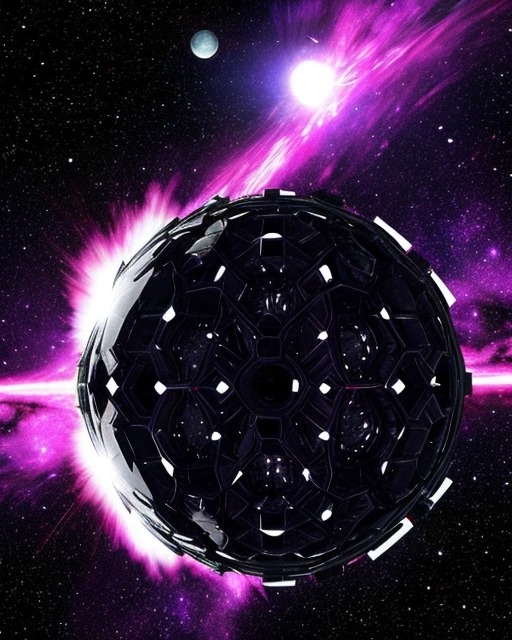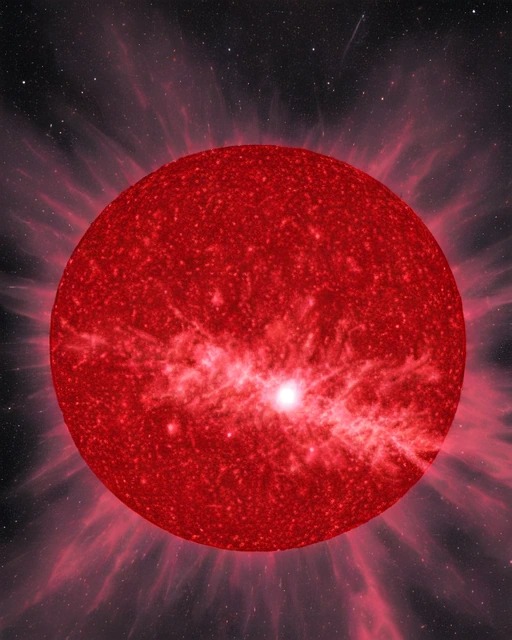You’ve heard of Betelgeuse if you’re an amateur astronomer. It’s that flickering red star at the bottom right corner of the constellation of Orion, as viewed in the southern hemisphere, and top left viewed from the northern hemisphere.
Those born in the 1980s would have heard of it via the surreal Tim Burton film, Beetlejuice. Good news for fans: a sequel is due September 2024, over 25 years since the original premiered.
As for the name Betelgeuse, its etymology is as controversial as its distance. While Arabic in origin, it does not mean “Orion’s armpit”, although from the northern hemisphere it might look like Orion has an itchy armpit. Yad al-Jauzā, meaning hand of Orion, is most likely the source of our English derivation.
Despite being more than 500 light years away, it’s one of the ten brightest stars in the sky. We can see it because it is massive. If it was in the centre of our solar system it would engulf all the inner planets, its radius stretching out to the asteroid belt between Mars and Jupiter. Remarkably, accurately measuring its distance has been a doozy for scientists, with some estimates putting its distance from Earth at 600 light years.
At only 10 million years old, Betelgeuse is a very young star (for comparison, the sun is 4.5 billion years old. This is very much due to the star’s mass. Heavier stars burn their stuff faster and may end their life in a violent supernova explosion. This is unlikely happen to Betelgeuse for at least a million years, but for those who witness it, it’ll be a treat (Sirius is another star that burns brightly and will die young).
The Great Dimming
Betelgeuse mysteriously dimmed near the end of 2019, only returning to its customary brightness quite recently. Netizens are already calling the 2019 event The Great Dimming. Their are several explanations for this dip in luminosity. The most obvious: Betelgeuse passed behind a giant dust cloud, although it has not decisively been determined whether this cloud was interstellar in origin or is the result of a surface mass ejection from the star itself.
A more radical explanation for Betelgeuse’s dimming: aliens are building a giant Dyson Sphere! A Type-2 civilisation can harness the power of its entire host star for energy. For maximum possible energy, a sphere is constructed around the star, maybe even completely encasing it (although that’ll make those beach holidays a little less fun). The Dyson Sphere could also be less extreme, perhaps a lattice of solar arrays.
When all is said and done, an engineering project as ambitious as a Dyson Sphere would result in something so powerful it could probably power billions of Dyson vacuum cleaners, which might help us suck up the mess we’ve made on our planet so far.

However, to construct a Dyson Sphere around Betelgeuse would be an immense task, as Betelgeuse is 700 times the size of our sun. So the Great Dimming is likely due to something more prosaic: a dust cloud blotting out the star’s light.
But here’s the clincher, Betelgeuse has been misbehaving for some time. Australian aborigines have long noted its variability, while English astronomer John Herschel claimed he saw Betelgeuse outshine Rigel on three occasions (1837, 1839 and 1852). Poor Rigel.
No children
Planet hunters have not confirmed any exoplanets orbiting the red giant, although it possibly has two companions.
Like Sirius, Betelgeuse features heavily in speculative fiction, conspiracy theories and myth. While it didn’t fulfil any Mayan prophecy in 2012 killing everyone with a devastating x-ray burst, this hasn’t stopped subeditors pumping out headlines such as: “The supergiant Betelgeuse star will explode. It’s just a matter of when, astronomer’s say.”
Some scientists attribute The Great Dimming to a mass ejection of dusty star stuff that briefly hid the red dude from view. In other words, Betelgeuse led rip a big one, and any civilisations on planets orbiting Mr B probably lost their internet access.

But the plot thickens. Allegedly, Betelgeuse has only been red for a thousand years or so. Han dynasty court astronomer Sima Qian described it as yellow, while first century Roman astronomer Hyginus did not include it in his catalogue of red stars, instead comparing it to Saturn (Saturn was flattered). Crucially, this has led scientists to believe that, in the span of only a few of millennia, Betelgeuse has burnt out all its hydrogen and transitioned to consuming helium.
In their mythology, the Romans associated Betelgeuse with Orion the Hunter. This marks it as a star of war. In Japan, the Tairi Clan adopted Betelgeuse as their standard while their rivals, the Minamoto, chose Rigel, the brightest star in Orion.
More info on Betelgeuse
Class: Red supergiant
Spectral type: M1-2
Apparent magnitude (V): 0.0 to +1.6
Absolute magnitude: ≈-6
Mass: 14-19 solar masses
Temperature: 3600K
Distance: ≈548 light years
Variable type: SRc (semi-regular)
Age: ≈10,000,000 years
In Tales from the Orion Arm, Betelgeuse is linked to our local stellar neighbourhood by an ancient wormhole constructed by an unknown civilisation using tech that has yet to be reverse engineered. The warp gate is operational, but no species can work out how to construct another one.
